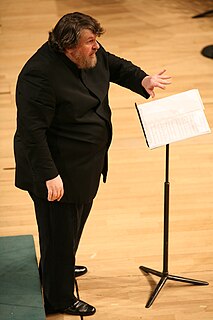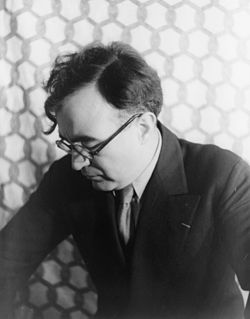Related Research Articles
Ellen Taaffe Zwilich is an American composer, the first female composer to win the Pulitzer Prize for Music. Her early works are marked by atonal exploration, but by the late 1980s, she had shifted to a postmodernist, neoromantic style. She has been called "one of America's most frequently played and genuinely popular living composers." She was a 1994 inductee into the Florida Artists Hall of Fame. Zwilich has served as the Francis Eppes Distinguished Professor at Florida State University.

Milton Byron Babbitt was an American composer, music theorist, mathematician, and teacher. He is particularly noted for his serial and electronic music.

Stuart Oliver Knussen was a British composer and conductor.

David Leo Diamond was an American composer of classical music.

Roger Huntington Sessions was an American composer, teacher and writer on music.
John Harris Harbison is an American composer, known for his symphonies, operas, and large choral works.
The Symphony No. 4 in F minor by Ralph Vaughan Williams was dedicated by the composer to Arnold Bax.

Igor Stravinsky's Violin Concerto in D is a neoclassical violin concerto in four movements, composed in the summer of 1931 and premiered on October 23, 1931. It lasts approximately twenty minutes.
The Symphony No. 6 of Roger Sessions, a symphony written using the twelve-tone technique, was composed in 1966. It was commissioned by the state of New Jersey and the New Jersey Symphony Orchestra. The score carries the dedication: "In celebration of the three hundredth anniversary of the state of New Jersey".
The Symphony No. 4 of Roger Sessions was composed in 1958.
The Symphony No. 5 of Roger Sessions was commissioned in 1960 and completed in 1964. It was commissioned by Eugene Ormandy and the Philadelphia Orchestra, and the first movement only was premiered by them in February 1964, the rest not being completed until that December.
Miguel del Águila is an Uruguayan-born American composer of contemporary classical music.
The Symphony No. 3 of Roger Sessions was written in 1957. It was a result of a commission by the Koussevitzky Foundation to celebrate the 75th anniversary of the Boston Symphony Orchestra, and was premiered by the Boston Symphony on December 6, 1957, conducted by Charles Munch. Sessions later was commissioned by the Boston Symphony on their centenary, when he provided them with his Concerto for Orchestra. Andrea Olmstead describes all of Sessions's symphonies as "serious" and "funereal", with No. 3 being one of four with, "quiet reflective endings."
The Symphony No. 7 of Roger Sessions was written in 1967 for the 150th anniversary of the University of Michigan. It was premiered in Ann Arbor, Michigan, on October 1, 1967, by the Chicago Symphony Orchestra, conducted by Jean Martinon.
The Symphony No. 1 of Roger Sessions is a symphony in three movements, in E minor.
Roger Sessions' Violin Concerto was composed between 1927 and 1935, and is scored for violin and orchestra.
Roger John Goeb was an American composer.

Caballos de vapor, sinfonía de baile is a ballet score composed by the Mexican composer Carlos Chávez in 1926–32. A shortened concert version is published as Suite sinfónica del ballet Caballos de vapor.
The Third Essay, Op. 47, is a short orchestral work composed by Samuel Barber in 1978. The score is dedicated to Audrey Sheldon.
The Symphony No. 9 by Roger Sessions is a symphony in three movements, completed in 1978. A performance lasts about 28 minutes.
References
- 1 2 3 "Notes to a CD Recording of Sessions' Symphony No. 8" . Retrieved 21 December 2009.
- ↑ "(Principal) Works", The Roger Sessions Society. Accessed: Aug. 18, 2015.
- ↑ Olmstead, Andrea (2012). Roger Sessions: A Biography, p.356. Routledge. ISBN 9781135868925.
- ↑ Olmstead (2012), p.363.
- ↑ "Sessions: Symphony No. 8", Edward B. Marks Music Company: Classical (publisher's website, accessed 26 August 2015).